Explore the Untamed Beauty of Africa's Iconic Antelope, the Majestic Waterbuck
The waterbuck is a genuine icon of African wilderness, with its thick, shaggy coat and characteristic white ring on its back, as well as its majestic set of curled horns.
These antelopes have evolved unusual adaptations to flourish in damp surroundings. They have a waterproof coat and specialized glands that emit an oily substance.
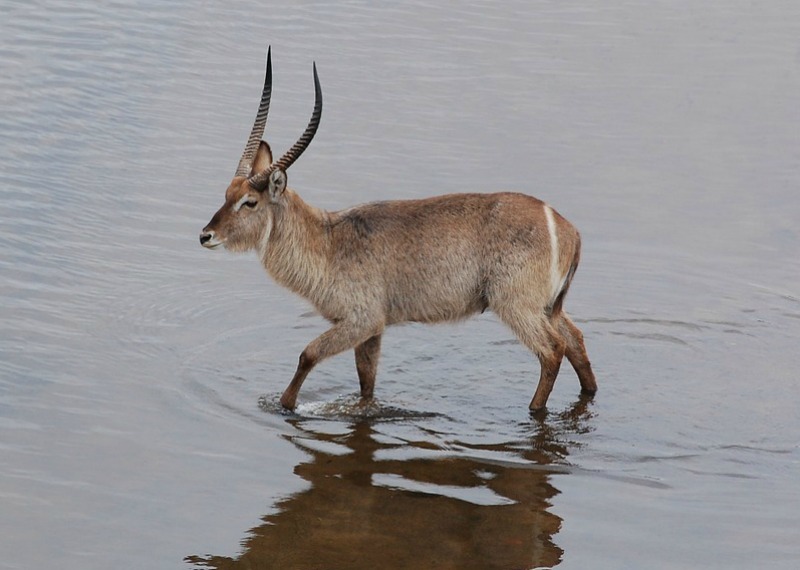 Waterbucks are never far from permanent water sources.
Waterbucks are never far from permanent water sources.Their massive size and muscular physique also make them a remarkable sight, especially during mating season when males engage in furious competition.
These large antelopes drink water daily and prefer the quality grass that grows along river edges and on floodplains.
They also prefer the stony slopes of mountain terrain.
Waterbuck characteristics
They are stockily built, with short legs.
The color is grayish brown, with a distinctive collar on the throat.
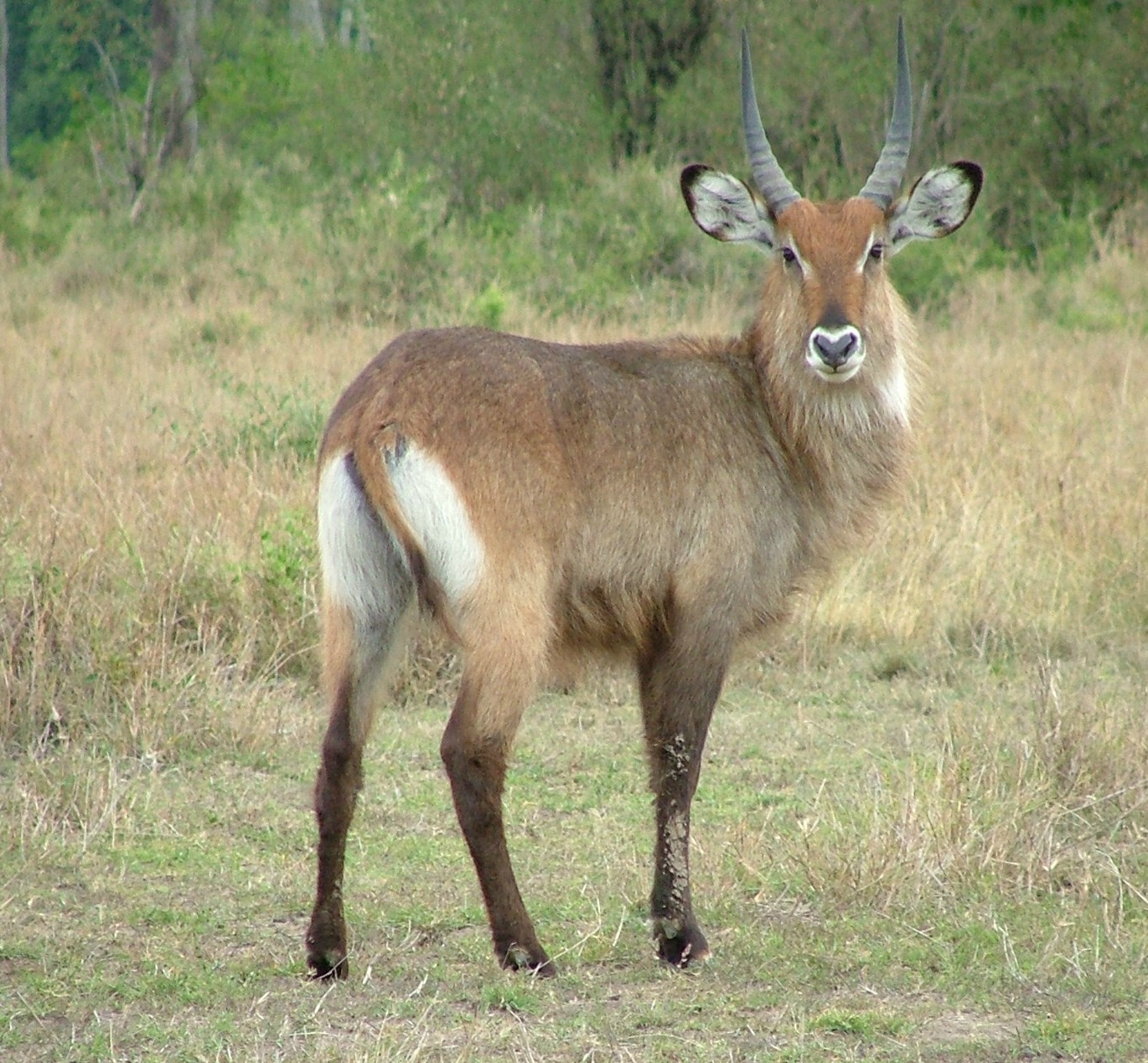
|
Anatomy |
Male |
Females |
|
Shoulder height |
1,3 - 1,7 meters |
1,1 meters |
|
Weight |
270 kilograms |
180 kilograms |
Their coat is rough and shaggy in appearance and there is a rough on the underside of the neck.
Only the males have horns.
Mature bulls have a strong odor.
Waterbuck habitat
Floodplains, reed beds, grassland, and woodland within two kilometers of water.
What do Waterbucks eat?
They are grazers with a preference for long grass.
These African wild animals browse occasionally on plants, shrubs, or trees.
They usually drink several times a day.
Are these wildlife animals very social?
Females and non-breeding males live in herds of 6 to 12.
The breeding males establish territories in areas where there is a rich food supply.
Bachelors are kept away from the best feeding areas by the territorial bulls.
A territorial bull will tolerate the presence of a younger male who helps with territorial defense.
How do Waterbuck breed?
A territorial bull regularly tests the reproductive condition of females by sniffing their urine and genitals.
If a female is on heat, the bull courts her by rubbing his face and the base of his horns on her back.
He also taps her between her hind legs with a foreleg.
If she is receptive the female stands with her tail to one side. There will be up to 10 copulations.
A female leaves her herd to give birth and the calf lies hidden in thick cover for about a month.
The mother visits a few times a day for suckling.
The calf finds itself a new place to hide after each visit.
Calves are weaned at six to eight months.
How is dominance established among waterbuck males?
A territorial male advertises his status by standing proud with his head high and showing the white band on his throat and face.
If he stands broadside, he shows off his size and the thickness of his neck.
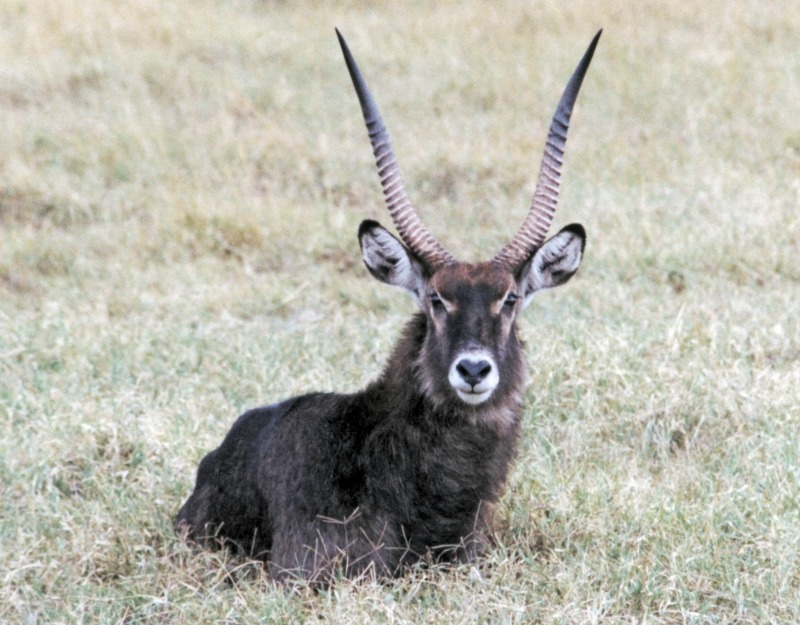
Lowering his horns and shaking his head is signs of a stronger threat.
A territorial bull also displays his status by horning grass and bushes.
Serious fighting is fierce and deaths from horn wounds are commonly fatal among these African animals.
Combat involves pushing with locked horns and attempts to gore the opponent in the flank.
A bachelor male may be tolerated as he moves through a territory if he behaves submissively by holding his head low.
Within the bachelor groups there are dominance hierarchies that are established by pushing contests.
Older, larger animals tend to be higher in rank.
What can waterbucks do when they are in danger?
These African animals lack both speed and endurance, so they depend a lot on cover as a refuge from predators.
They readily take to the water to avoid predators.
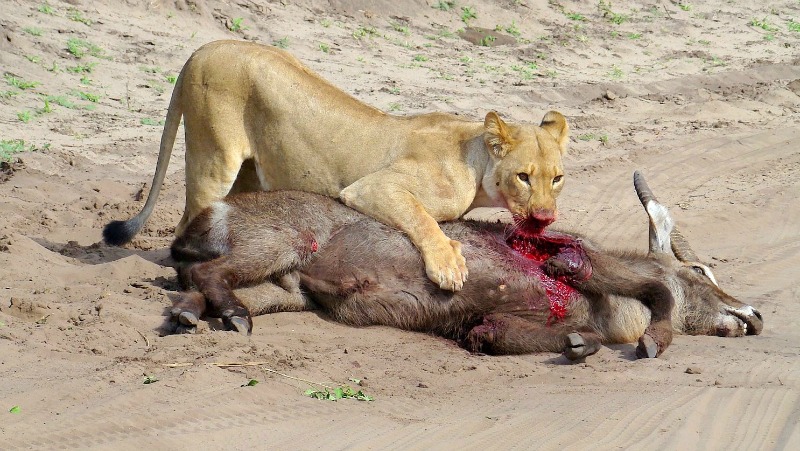
There is a belief that the meat of older waterbuck takes on an unpleasant odor from the secretions of its sweat glands.
This leads to the belief that predators tend to avoid them as prey.
This can however not be supported by accurate data.
Waterbuck adaptations
What they do with their tails is a good indicator of what mood they are in.
Their behinds also help members of their group to follow each other and stay together.
They have been known to evade predators by rushing into water. The trademark white ring around the waterbucks' hindquarters is used as a "follow me" sign.
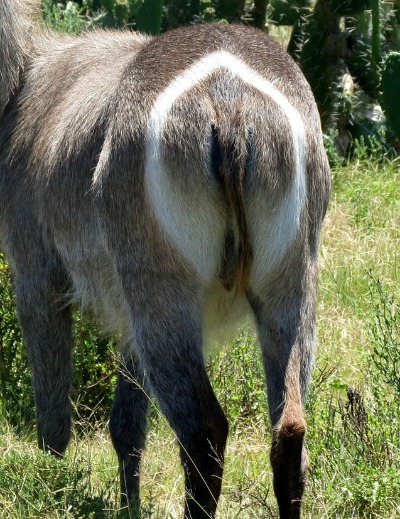 What parts of a waterbuck body help it escape predators?
What parts of a waterbuck body help it escape predators?The white target ring on the animal's rump helps the herd keep together when it flees predators through dense bush.
This intriguing creature has long attracted wildlife enthusiasts and experts alike, thanks to its noticeable water-repellent coat and exceptional adaptation within the African environment.

